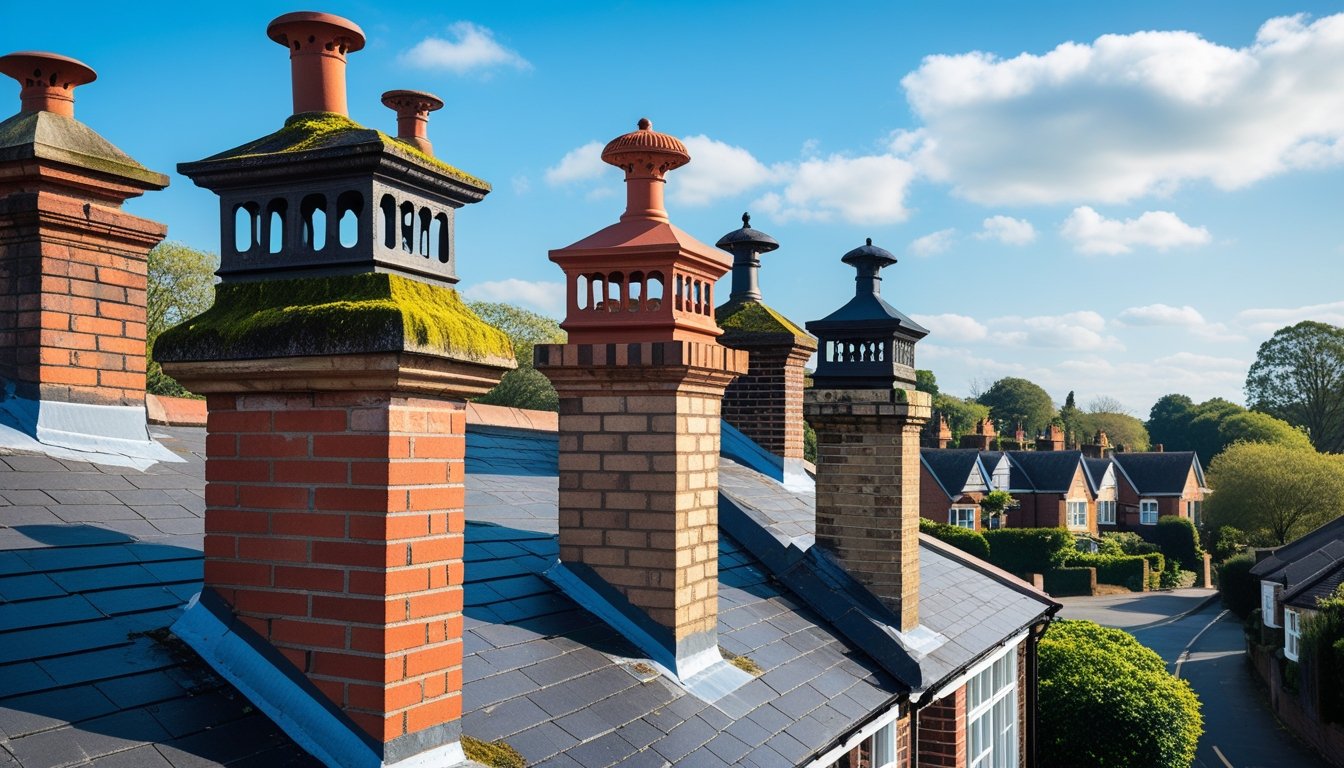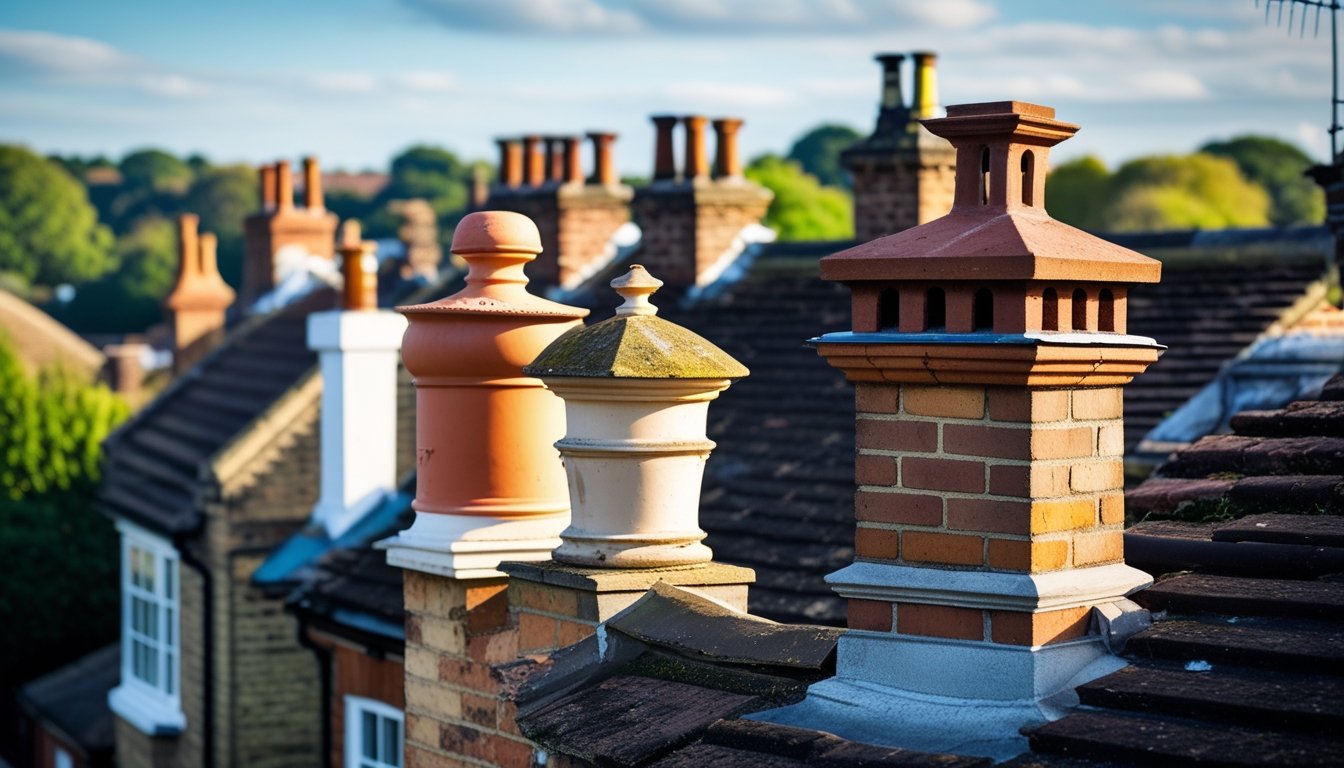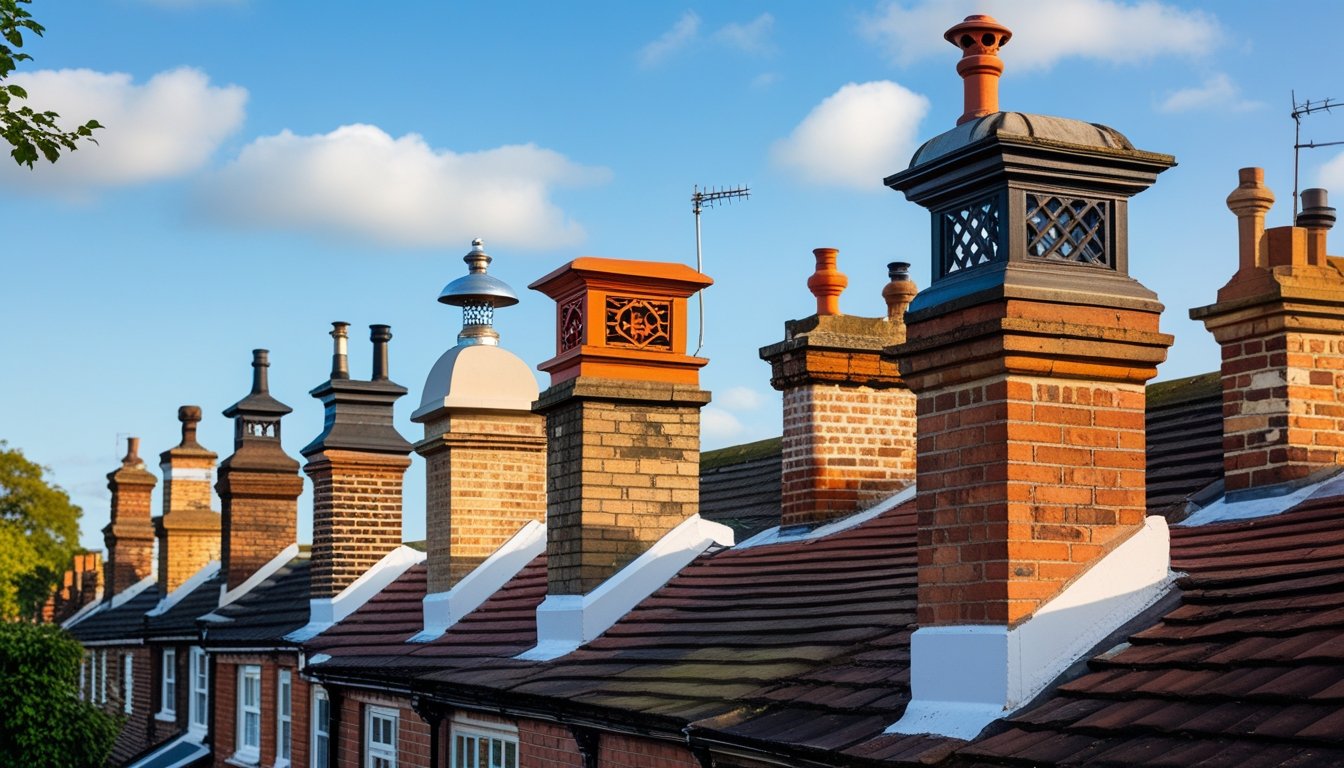Late updated: 19 May 2025 12:05
Written by: Oliver Bennett
Exploring Unique Chimney Pot Designs in the UK: A Guide to Architectural Charm
Exploring chimney pot designs in the UK reveals a surprising variety of forms and functions, ranging from the traditional to the fantastical. These architectural accents are more than just practical solutions; they are an expressive art form that can reflect cultural and historical influences. From the simple, utilitarian shapes to intricate creations featuring dragons, crowns, and twists, these pots offer a unique glimpse into a rich architectural tradition.

In the UK, chimney pots have evolved over centuries, adapting to regional styles and technological advances. They can be made from terracotta, stone, or metal, each material contributing different benefits in terms of durability and aesthetics. Our exploration will uncover how these designs not only enhance the appearance of rooftops but also improve functionality, such as optimising airflow and enhancing the combustion efficiency of fireplaces.
By examining both reclaimed and newly crafted chimney pots, we appreciate not only their practicality but also their artistic merit. This journey through design will highlight how these overlooked elements can transform the visual landscape as well as offer creative applications in modern architecture and home renovation.
Key Takeaways
- Chimney pots in the UK have a rich history and diverse designs.
- These designs balance function with aesthetic value.
- We explore both new and reclaimed pots for creative applications.
Understanding Unique Chimney Pot Designs in the UK

In the UK, chimney pots are not only functional but also serve as key architectural elements that reflect historical styles, material choices, and functional requirements. Traditional and modern designs are influenced by practicality and aesthetic value.
Historical Evolution of Chimney Pot Styles
Chimney pots have evolved significantly since their introduction, particularly in southern England from the 13th century. Clay and stone chimney pots were common initially, often simple in design. Over time, more ornate styles emerged, especially during the Victorian and Edwardian eras.
These changes often mirrored broader architectural trends. For example, the Victorian period saw increased decorative features, aligning with the era's ornate architectural details. Interestingly, today's designs often incorporate both historical inspirations and modern innovations, creating a blend that pays homage to past styles while accommodating contemporary needs.
Materials Used in Traditional and Modern Chimney Pots
Materials used in chimney pots have changed over time, influenced by availability and technological advances. Traditionally, clay and stone were prevalent due to their accessibility and durable characteristics. Today, while clay remains popular, other materials like metal and concrete are also used.
Modern materials often provide benefits such as enhanced durability and ease of maintenance. Clay, however, continues to be favoured for its classic appearance and ability to withstand varying weather. Notably, the choice of material affects not only the aesthetic outcomes but also the functional efficiency.
Functional Aspects and Influence on Flue Liner Selection
The primary function of a chimney pot is to improve draft and prevent downdrafts, which is closely tied to flue liner compatibility. Chimney pots can influence airflow dynamics, affecting how efficiently smoke and gases are expelled. Crucially, the internal diameter of the pot should align with the flue liner to ensure proper function.
Design features like height and capping can also impact performance. Variations in chimney pot design are essential for accommodating different types of fuels and heating systems. Thus, selecting the correct combination of pot and flue liner is vital for effective operation, maintaining safety, and maximizing efficiency in both traditional and modern settings.
Visual Exploration and Creative Applications
Exploring unique chimney pot designs offers both aesthetic and functional benefits. Let's investigate modern design trends, decorative uses, and the significant contribution of imagery and panoramic resources to inspire creative applications.
Modern Design Trends and Decorative Uses
In the UK, chimney pots have evolved beyond their basic function. They’ve become a canvas for artistic expression and innovation. Modern designs incorporate materials like terracotta, cast iron, and even stainless steel, reflecting current architectural trends.
Decorative uses include custom shapes, intricate scrollwork, and creative motifs. These enhancements not only elevate the building's appeal but also integrate with its overall theme, from classical to contemporary. By selecting a design that complements the aesthetic of a structure, we can both preserve tradition and embrace modernity.
Showcasing Chimney Pot Imagery: Photos, Videos, and Vectors
Visual resources play a pivotal role in showcasing chimney pot designs. High-quality images and stock photos provide detailed views of varied styles and materials. Vector graphics allow us to inspect design intricacies and experiment with modifications.
Videos offer dynamic insights, highlighting how light and shadow interplay across different surfaces. Through these mediums, enthusiasts and professionals alike can better appreciate and select designs that fulfil their vision.
Panoramic and 360° Visual Resources for Inspiration
Panoramic images and 360° experiences offer unique perspectives, enabling a deeper appreciation of chimney pot placement and impact on a skyline. These resources allow us to view chimney pots in context, considering factors like rooftop alignment and landscape integration.
High-resolution formats provide clarity, ensuring no detail is missed. With the increasing availability of virtual reality tools, users can explore these elements interactively, fostering innovation and creativity in chimney pot design and application.
Frequently Asked Questions

In our exploration of unique chimney pot designs in the UK, we've encountered several common inquiries. These include traditional styles, contributions to ventilation, and considerations for period homes.
What are the traditional styles of chimney pots found in the UK?
Traditional chimney pots in the UK include Victorian and Edwardian designs. These are often characterised by their ornate shapes and intricate details, reflecting the architectural trends of their respective eras. Such styles have historical significance and continue to add charm to period properties.
How can chimney pot designs contribute to better draught and ventilation?
Chimney pots are designed not only for aesthetic appeal but also to improve ventilation. Their shape and height can influence the draught, allowing for more efficient smoke expulsion. Certain designs, such as taller or wider openings, can enhance air flow and prevent downdraughts.
What considerations should be taken into account when selecting a chimney pot for a listed building?
When selecting a chimney pot for a listed building, it's important to ensure compatibility with the property's historical period. Materials and designs should align with the building's original style to comply with preservation regulations. Consulting heritage guidelines is advisable to maintain architectural integrity.
Can custom chimney pots be created to match the architectural style of a specific period home?
Yes, custom chimney pots can indeed be crafted to harmonise with specific architectural styles. Artisans often recreate period-accurate designs, using traditional methods and materials. This allows homeowners to preserve the historical aesthetics while ensuring functional efficiency.
What materials are commonly used in the construction of chimney pots in the UK?
Chimney pots in the UK are typically constructed from clay, terracotta, or ceramic. These materials have been favoured for their durability and resistance to heat. In some modern adaptations, metal or concrete may also be used, depending on the desired look and function.
Is there a significant difference between modern and historical chimney pot designs in terms of efficiency?
Modern chimney pot designs often incorporate features to enhance efficiency, like improved aerodynamics for better smoke dispersal. While historical designs may not have prioritised efficiency to the same extent, they offer aesthetic value and can be upgraded or paired with additional components to improve performance.
